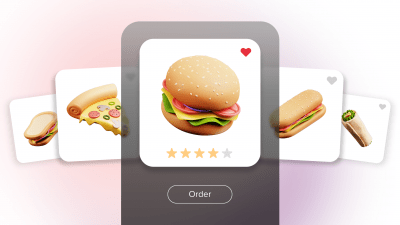Last Updated on: 18th June 2024, 01:51 pm
Digital advertising comes with excellent conversion rates if done correctly. On the other hand, it is much easier to cross the line and annoy your audience. How? For example, by showing them your ads one too many times. This article will cover ad fatigue, its impact on your business, and how to avoid it.
In this article you will learn about:
- The definition of ad fatigue
- How important it is to find a balance with your ad frequency
- The destructive influence of ad fatigue on your business
- Frequency capping and what benefits it brings
- More ways to prevent ad fatigue, including RTB House’s approach
Table of contents:
- The definition of ad fatigue
- Be careful with high-frequency advertising
- The negative influence of ad fatigue on your business
- How to avoid ad fatigue? 1st solution: frequency capping
- Key benefits of frequency capping
- How to avoid ad fatigue? Four other ways
- RTB House’s way to avoid ad fatigue
- Display your ad creatives with ad frequency in mind
The definition of ad fatigue
Ad fatigue occurs when your audience is overexposed to the same ad. They become bored with your ad content. Eventually, this leads to annoyance. It doesn’t matter what your ad placements are regarding ad fatigue. Google Ads, Facebook Ads, TV advertisements – none of these places are free from risk.
Ad fatigue may impact your ad campaign, and that’s why it’s essential to learn how you can control it.
Be careful with high-frequency advertising
It might seem like there are some great benefits of setting your campaign objective to a maximum display frequency. To name but a few:
- You have many more opportunities to interact with your customer
- Your offer comes to be well-known
- Your brand starts to be recognizable to your target audience
Therefore, you’d probably like to pursue it as much as possible. It’s understandable. However, your viewers will quickly start showing ad fatigue signs with this approach.
We recommend finding the right balance. The above benefits are real and could bring you higher conversion rates, but at the same time, customers suffering from ad fatigue could undermine your efforts.
The negative influence of ad fatigue on your business
We will explain how advertising fatigue affects your campaign performance and your business.
Higher Cost per Click (CPC)
Imagine a user sees your ad and… scrolls through it. They don’t even read a word from your ad copy. This is called banner blindness. Yet, you still have to pay to show them the ad. And, of course, you pay again when they encounter the same ad once more. Even though they didn’t take any action or click on the banner.
That’s how your CTR (Click-Through Rate) decreases. After some time, your campaign CPC starts to rise. This is actually the first sign of ad fatigue. From this point on, your ad budget is starting to go to waste.
Inadequate ad set
Ad delivery is based mainly on algorithms. They try to figure out who would be the best person to show your ad creative to. However, it becomes tricky when your audience is suffering from ad fatigue.
Your viewers stop reacting to your ad campaign, and therefore, algorithms start to think that your content is not relevant to your target audience. Even if they would love to buy from you in different circumstances. As a result, you lose customers, as they won’t be seeing your ad set anymore.
Damaged brand image
One of the most dangerous effects of ad fatigue is annoyance towards your entire brand. People quickly get to the point where they avoid your company and offer altogether. They just don’t feel like your brand can offer them respect and a good customer experience. This comes with severe consequences, as both these factors gain in importance each and every day.
If you are interested in some ad fatigue research, The CMO Club and Thunder conducted a survey in June 2018:
- 74% of respondents consider brand loyalty as most negatively affected by bad ads
- 55% of respondents consider frequency and relevancy as the top factors in bad ads
Lower conversion rates
All of the above issues combine into one final result: viewers are less likely to buy from you – conversion rates decrease. Here are some ad fatigue statistics, as Simulmedia has researched this topic:
- Seeing an ad for the first time made viewers 5.7% more prone to purchase than not seeing it at all
- People who saw the ad 6-10 times were 4.1% less likely to buy a product than those who saw the ad 2-5 times
- It keeps getting worse – people who saw the ad 11+ times were 4.2% less likely to buy than those who saw it 6-10 times
As a result, ad fatigue undermines every effort you’ve made to reach your final goal: more sales. Every penny you spend will be for nothing if you don’t monitor and prevent ad fatigue.
How to avoid ad fatigue? 1st solution: frequency capping
What is frequency capping? This is a way to limit how often a particular user would see your ad. Now that you know the definition, it’s worth wondering what the optimal frequency capping rate is. Well, there is no clear answer. It depends on various factors, such as:
- What is the ad campaign’s objective (branding, selling a product)?
- Is the product expensive, does it have any other factor that requires a customer to take more time to think than with less costly offers?
- Does the demand for your product change with the seasons?
Many more factors contribute to frequency capping best practices, which makes it troublesome to give exact guidelines.
One more thing to remember is: frequency capping is merely a part of a broader notion – frequency management. It is crucial to test different approaches every one/two months to provide the best results. You can’t just use frequency capping without a deeper analysis in particular cases. Imagine showing 2 different ads from one campaign vs. showing the same ad twice. These seem similar, but ultimately they are entirely different situations. That’s why it’s crucial to think it over with every single case.
Key benefits of frequency capping
- The algorithms are forced to find new viewers. You could reach a broader audience with the same amount of money.
- Higher View-Through Rates (VTR), as frequency capping helps to keep views unique.
- Better consumer experience, as you deliver more diverse, and therefore, exciting creatives. Providing your audiences with a great viewing experience positively influences your brand image.
- It saves money because your budget won’t be wasted by showing the same ad to the same user, who doesn’t act on it anymore.
How to avoid ad fatigue? Four other ways
Frequency capping is one of the best methods but not the only one to avoid ad fatigue. If you want your ads to perform better, you must keep your audience engaged. Try the methods stated below.
Target new audiences/adjust audience settings
It is always worth checking if your audience is, in fact, appropriately adjusted. Maybe your target group is too narrow, and the algorithm doesn’t have enough viewers to choose from? Perhaps you should target an entirely new niche?
Ad rotations
Just create 3-5 variations of an ad creative and rotate them every few days. This helps to keep the audience enthusiastic.
Test different ad placements
Some ads perform better at the top of the page, while others require an introduction and do best in the footer. Don’t go with one standard approach for every ad creative.
User-generated content and industry experts
This could bring great diversity to your campaigns. Every voice is different, has its audience, and focuses on various features of your offer.
RTB House’s way to avoid ad fatigue
As you can see – there are many approaches to combat ad fatigue. That’s why, at RTB House, we have decided to leverage the power of technology.
We use AI-based contextual targeting, a Deep Learning engine, and diverse types of ads. Thanks to this, we can send the right message, to the right user, at the right time. As a result:
- Our audience keeps their focus in place
- Ad campaigns’ scores improve
- You can rest assured that your budget is fully optimized
Display your ad creatives with ad frequency in mind
There is more to be said about ad fatigue. However, the most important thing is to remember that high-frequency advertising isn’t always the best way to go. Sometimes less is more.
We have a blog post about ad fatigue signs and possible solutions, if this is something of interest to you. As to frequency capping, this is becoming challenging to maintain as the online world is headed towards cookieless solutions. We have also covered this topic in a blog post about frequency capping in privacy-centric digital advertising.
If you have any questions, comments or issues, or you’re interested in meeting with us, please get in touch.





